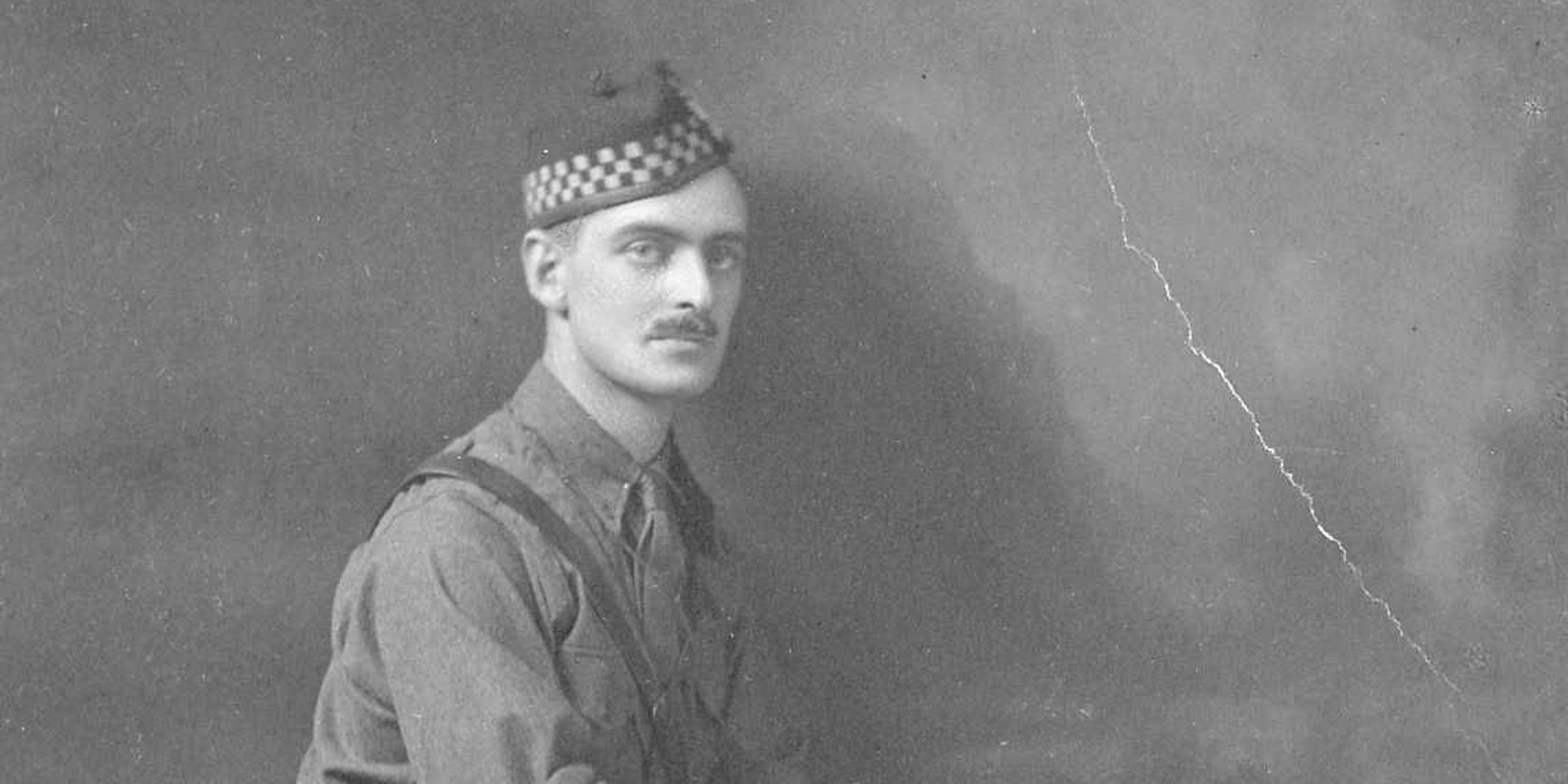Essex soldier one of first to command tanks on the Somme
The National Army Museum is publishing the papers of Major Allen Halford-Walker, a Scottish infantry soldier born in Essex. As a tank commander on the Somme he fought in both the Battle of Flers-Courcelette (15-22 September 1916) and the Battle of Ancre (13-18 November 1916). Allen’s papers, which include photos, diaries and letters, give a first-hand account of the earliest days of tank warfare, as the British struggled to make the most of their new weapon.
The development of the tank had been a close guarded secret as the British Army tried to find a mechanical solution to trench warfare. Both Allen and his brother Archie commanded tanks on their arrival on the Somme at the Battle of Flers and found them to be very unreliable.
Of the three tanks under Archie's command, one broke down, one suffered damage and one ran out of petrol and needed re-fuelling by the brothers. When the attack started, only 15 of the 49 tanks available were able to move into no-man's-land.
In Allen's post-war assessment of the attack, he wrote that the element of surprise had been wasted, and that the tank crews had been thrown into battle without adequate training.
In September, artillery and infantry were working together, with troops advancing behind the creeping barrage. But at Flers large gaps were left in the bombardment and in other battles infantry overtook the slow moving tanks and found themselves trapped in heavy machine gun fire, suffering heavy losses.
At Ancre it was decided that tanks would follow the infantry. As Allen’s papers show, it was emphasised in instructions to troops that ‘the Infantry would not wait for the tanks'. This meant that the tanks would instead be used to mop up the infantry.
But the machines themselves were slow, cumbersome and prone to technical problems. In the glutinous November Somme mud, they were vulnerable to getting stuck, which Allen records as fateful: 'I attribute the fact of the Tanks failing to gain their objective to the extraordinary bad ground they had to cross which was worse than I imagined possible.'
The new tanks and their inexperienced crews were ultimately ineffective at Ancre. A breakthrough was very nearly achieved with the ground-breaking vehicles at the Battle of Cambrai in November 1917, where tanks were first used on a mass scale. However, by 1918 the tank ensured final Allied victory as it became part of a complex all arms battle-plan, which when combined with aircraft, artillery and infantry tactics.
Dr Peter Johnson, Collections Development and Review Manager at the National Army Museum, said:
'Major Allen Holford-Walker's papers demonstrate how the British were forced to develop a whole new set of battle tactics for the newly invented tank. The British Army were under great pressure to adapt and innovate a way to break the bloody stalemate of trench warfare on the Western Front. It was the lessons learned on the battlefield by soldiers like Allen Holford-Walker, often at great cost, that paved the way for later Allied victories in 1918.'
After the Battle of Ancre, Holford-Walker returned to England and was awarded the Military Cross in the New Year’s Honours of 1917 for his bravery in France. One hundred years after the first tanks arrived on the Somme, Allen’s grandson has served with the Royal Hussars and his great-grandson serves with the Royal Armoured Corps in Bovington, Dorset.
Notes for editors
For more information please contact Eloise Maxwell at the National Army Museum press office on emaxwell@nam.ac.uk or 020 7881 2433.
Major Allen Holford-Walker
Allen Holford-Walker was born on 1 January 1890 in Southend, Essex. His family had a history of military service since 1760 - his uncle was killed in action in Malaya in 1832 and his father was a decorated Brigadier General. He attended the Royal Military College at Sandhurst, graduating in 1909 into 91st Battalion The Argyll and Sutherland Highlanders, in honour of his mother’s Scottish heritage. On 14 December 1914 he married Joan Barrington Moody in Farnham, Surrey, with whom he had three children.
In May 1915 Holford-Walker was sent to France with the 10th (Service) Battalion of the Argylls. Allegedly, prior to departing, he attended a séance, where it was foretold he would be injured in the stomach during the war. To avoid this fate he wore his helmet on his stomach. One night, whilst inspecting the Argylls, Holford-Walker had chosen to wear traditional Scottish trews (trousers). However, as highland battalions traditionally wore kilts, his troops wrongly assumed anyone in trousers was the enemy. He was mistaken for a German and attacked by one of his soldiers who tried to kill him with a pickaxe.
Allen Holford-Walker and his two brothers survived the war, despite suffering injuries. He was on sick leave when the war ended on 11 November 1918, and celebrated the Armistice with his wife Joan in Dorset. In 1929 the couple bought a farm in Kenya, where they raised Ayrshire cattle and owned a pet cheetah named Pong. Holford-Walker briefly returned to England during the Second World War. Being too old to fight he was made an honary colonel and was commanding officer in the Driving and Maintenance school at Bovington, Dorset (where his grandson is currently serving). He advised at the Colonial Office and led passive air defence in Scotland. He died at his home in Nanyuki on 22 April 1949.
National Army Museum
The National Army Museum is the leading authority on the history of the British Army. Founded in 1960 by Royal Charter and established for the purpose of collecting, preserving and exhibiting objects and records relating to the Land Forces of the British Crown it is a museum that moves, inspires, challenges, educates and entertains. The Museum tells the story of the British Army, the personal experiences of the soldiers who have served and connects the British public and its Army demonstrating how the role of the Army and its actions are still relevant today.
Heritage Lottery Fund
Using money raised through the National Lottery, the Heritage Lottery Fund (HLF) aims to make a lasting difference for heritage, people and communities across the UK and help build a resilient heritage economy. HLF has supported 36,000 projects with £6bn across the UK.
For more information, please contact Katie Owen, HLF press office, on tel: (020) 7591 6036 out of hours mobile: 07973 613820.


